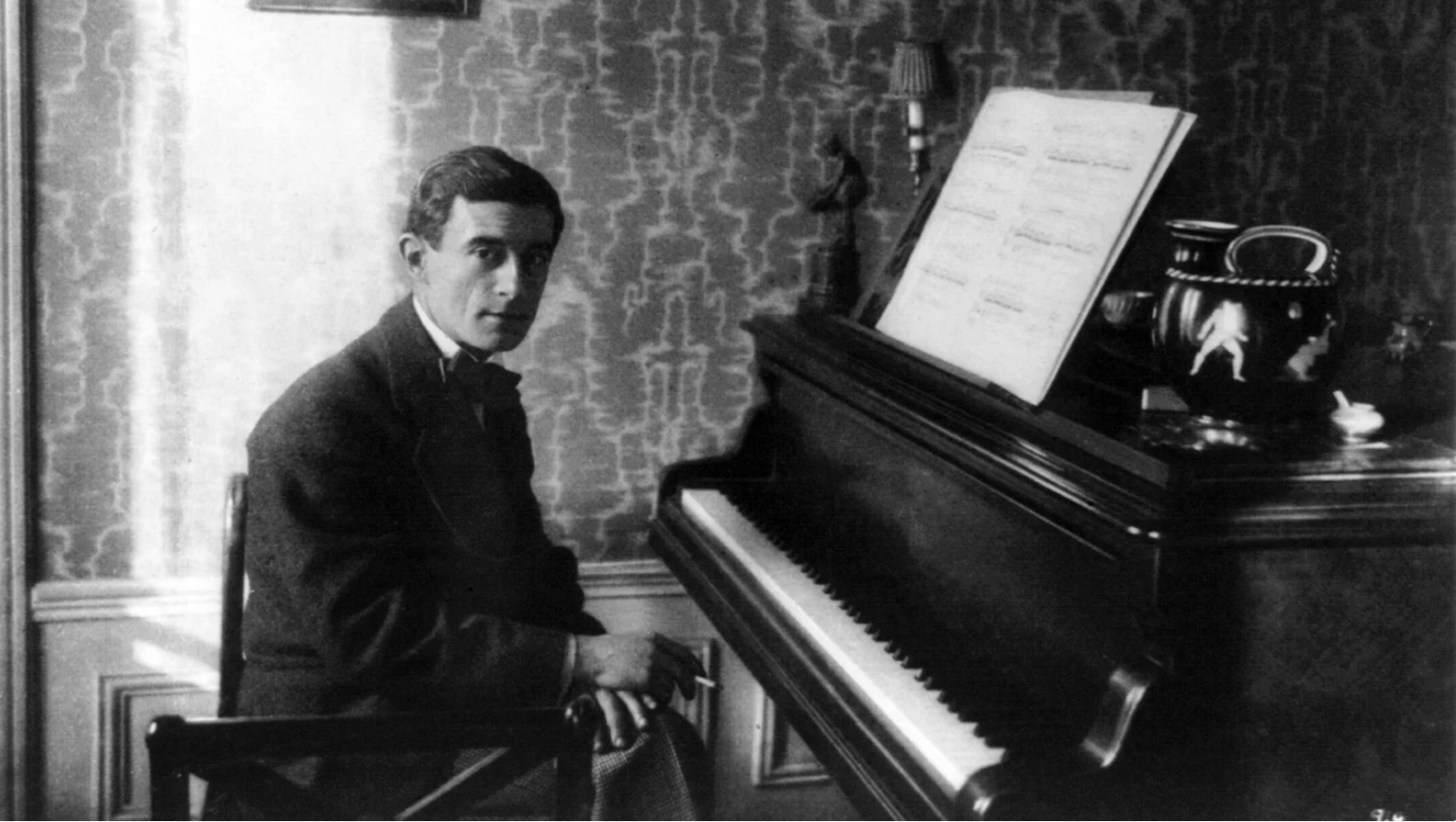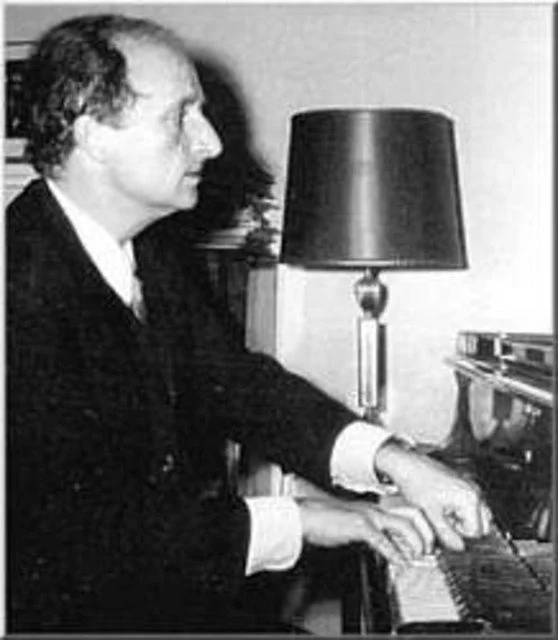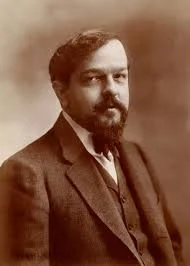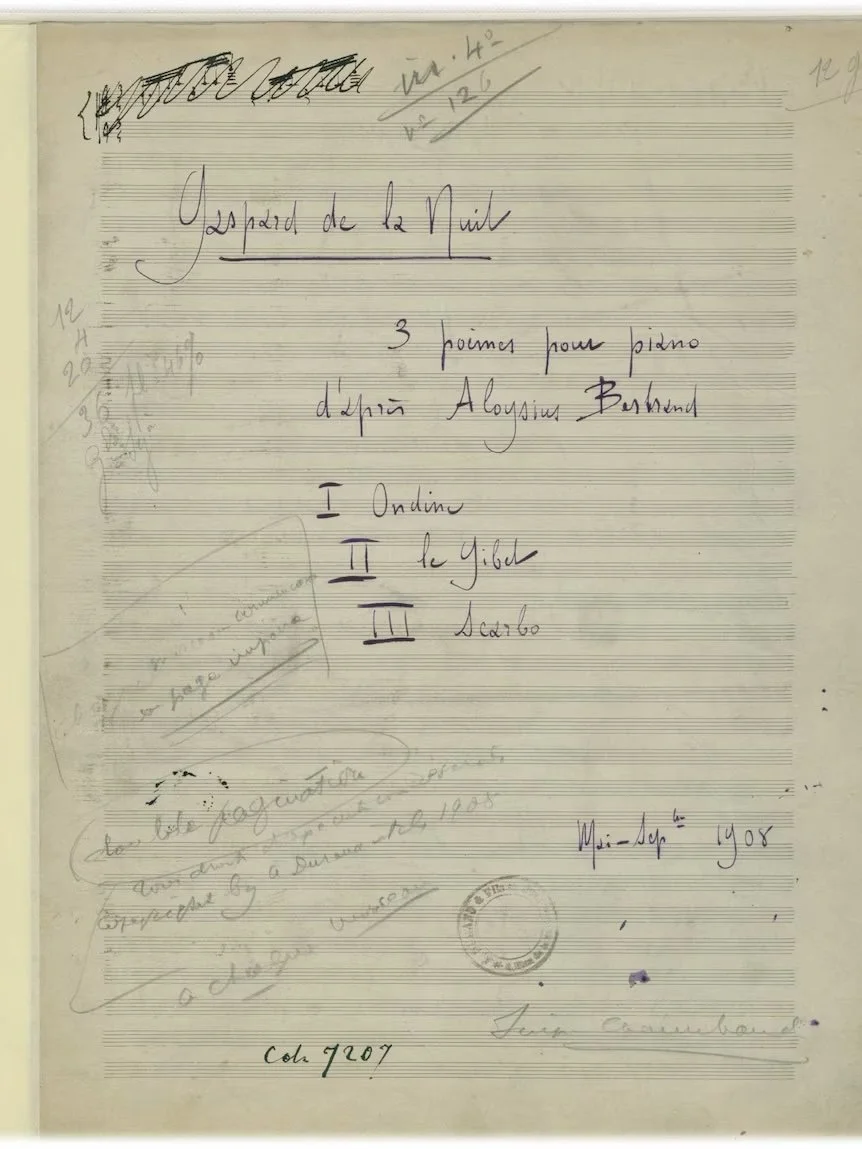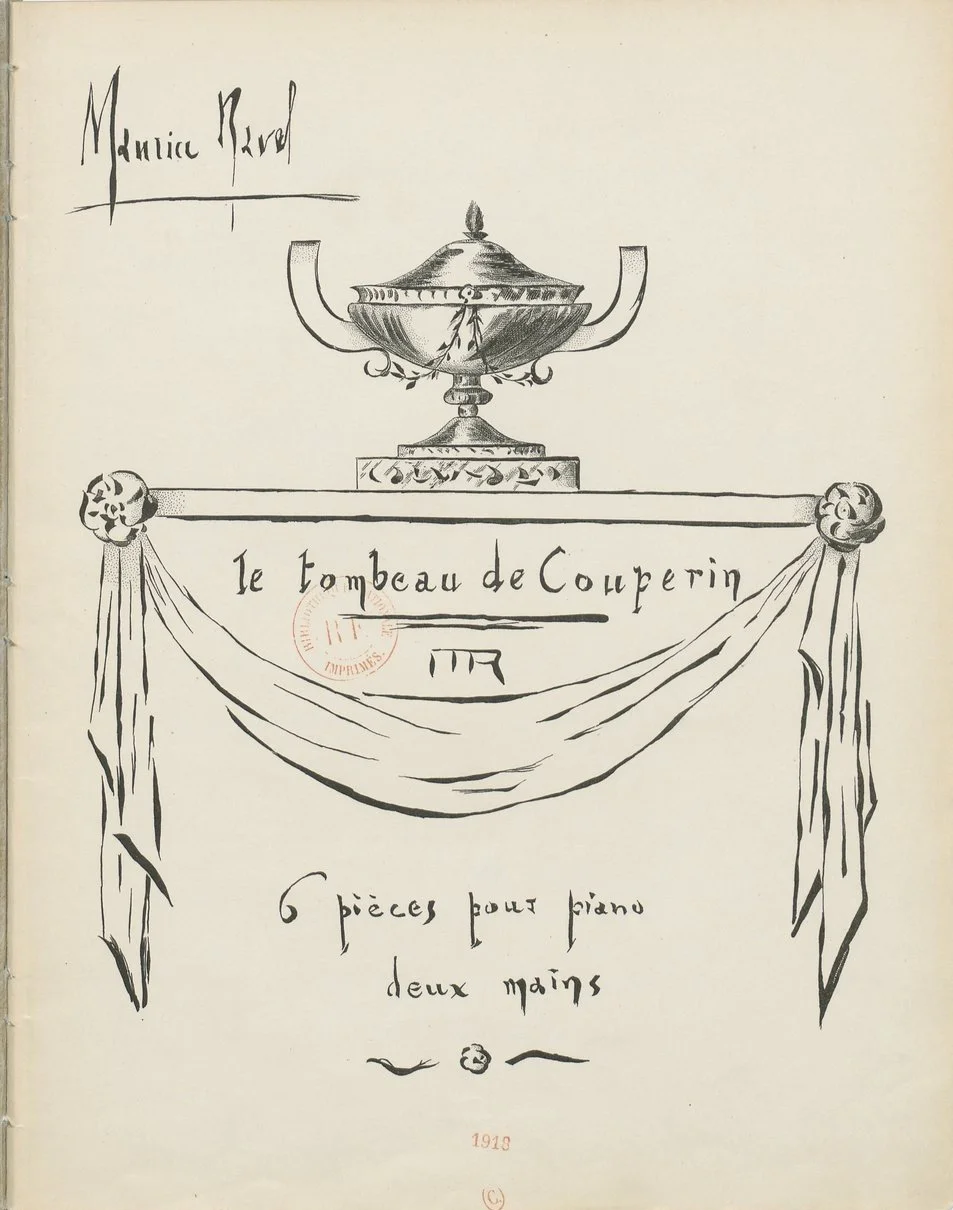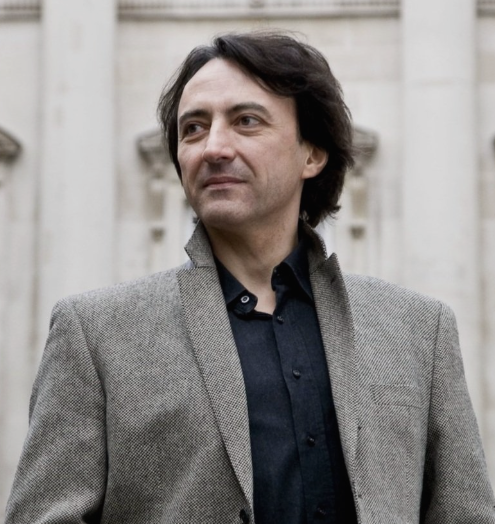MUSIC OF PERFECT PROPORTION
Jean-Efflam Bavouzet Performs the Complete Works of Ravel
By Patrick Neas, KC Arts Beat
Jean-Efflam Bavouzet at home in Normandy
Speaking from his home in Normandy in front of a gorgeous tapestry, Bavouzet is the epitome of French elegance. One of the most acclaimed pianists of his generation, Bavouzet is also one of the most versatile. For the prestigious Chandos label, he has recorded the complete sonatas of Beethoven and Haydn and the complete concertos of Mozart, Bartók and Prokofiev. But it is in the French repertoire that Bavouzet is unparalleled.
In honor of the 150th anniversary of the birth of Maurice Ravel, the Friends of Chamber Music will present a rare treat, Bavouzet performing the complete works of Ravel — in one evening! — May 8, at the Folly Theater.
Bavouzet’s recital is the final concert of the Friends of Chamber Music’s 49th season, and it brings the year full circle. Dmitri Atapine and Hyeyeon Park, the artistic directors of the Friends, give incredible thought to their programming, with every concert in the season commenting on and complementing the other concerts.
The season began last September with a concert celebrating the 150th anniversary of Arnold Schoenberg and the 205th anniversary of Clara Schumann, and now it ends with a celebration of Ravel’s 150th anniversary. It’s an appropriate ending to a season the Friends has called “Voyages.”
“It’s all been a voyage to Ravel,” Atapine said. “We're capturing every single piece by a composer, which is a monumental endeavor for Jean-Efflam, a feat of human endurance for brain and memory. To witness a man traveling in one evening through an entire lifespan of a great composer. It’s tracing an arc of a lifetime.”
Maurice Ravel at the piano.
Bavouzet credits his love for Ravel to his teacher, the renowned composer and pianist Pierre Sankan.
“It's very touching for me to speak about my experience with Ravel from where I am now because I'm in my house in Normandy, and before me, the owner was my very dear teacher and mentor, Pierre Sancan,” Bavouzet said. “He was a wonderful pianist, musician and a grand composer. He wrote tonal music, but he pushed the boundaries of tonality the way Ravel started to. I played the G major Ravel concerto more than 120 times, but every time, I think about Pierre Sancan. He taught me that with Ravel, the less you do the more the music speaks.”
Bavouzet said that the quality that Sankan emphasized was pudeur.
“I don't know how you translate that,” Bavouzet said. “Pudeur is not shy, but it’s when you don't want to show too much of yourself, just like Ravel. It's music that is very touching by its simplicity.”
This quality of pudeur or restraint can even be seen in Ravel’s output. For a composer of Ravel’s stature, it is somewhat surprising that all of his piano works can be performed in one evening.
“Playing all Ravel in one concert seems enormous, like a marathon, but actually it's not that much music,” Bavouzet said. “With two intervals included, it’s only three hours. You see, he is a giant for the quality of his music, but not for the quantity. He stands among the few composers where almost his entire oeuvre is played today in concert.”
Every piece of Ravel is a highly concentrated distillation of genius. As Ravel himself wrote, “I did my work slowly, drop by drop. I tore it out of me by pieces.”
Pierre Sancan
CLAUDE DEBUSSY
Jean-Efflam Bavouzet
In the minds of many music lovers, the music of Ravel and Debussy are often lumped together, but Bavouzet insists they are very different composers.
“This is one of my absolutely favorite subjects,” Bavouzet said. “They are incredibly different. Ravel is a classic composer. He always refers to classical structure, always, always, Ravel always refers to classical harmonies, even if some of them are really, you know, juicy, spicy, and with a little bit of dissonance. While Debussy is a complete revolutionary. Debussy almost never used classical form or any given pattern from the classical period.”
While they are very different composers, there is a quality that Ravel shares with Debussy, and that is the quality of “Frenchness.”
But how do you describe this elusive quality?
“Proportion,” Bavouzet said. “Perfect proportions that never exaggerate anything. Look at the French garden, look at the French architecture, look at the French painting. It's always a question of beautiful proportions and extremely refined harmonies. Debussy, Saint-Saëns, Bizet, Gounod, Chabrier, Lalo, Magnard, they all have an incredible sense for harmonies. But in the case of Ravel, I really think it's the perfect proportions. Never too long, never too short, exactly how it should be.”
Ravel had a great love and respect for French music, going all the way back to Baroque era. This love was especially expressed in his Baroque-style dance suite Le Tombeau de Couperin, which not only honored the composer Couperin but the entire history of French music.
“That was something that Debussy did as well, when he wrote an homage to Rameau,” Bavouzet said. “Don't forget that they were living in a time of war. They were living in a time where it was important to search what French is about and to dig into the French artistic roots. And therefore, they were also digging in the great old masters of the Baroque period.”
Le Tombeau de Couperin (original score)
Although Le Tombeau de Couperin has a sprightly, almost delicate sound, it is fearsomely difficult to play, as is all of Ravel’s piano music. But there one piece that is considered one of the most difficult pieces ever written, not just by Ravel but by anyone: Gaspard de la Nuit, especially the Scarbo movement.
“I think any pianist of any abilities learning Scarbo is sweating for weeks, for months,” Bavouzet said. “I was lucky enough to learn that piece under the guidance of Pierre Sancan, whom I mentioned earlier. He gave me some very good fingering because there is a lot of acrobatic crossing hands, which is part of the show. I do remember vividly struggling to learn it. I am probably now close to 200 performances of that piece. I don't want to say I can play it in my sleep, but it's the accumulation of performances of thousands and thousands of hours. And yes, it's always a struggle to play.”
Gaspard de la Nuit (Original Score)
Maurice Ravel
François Couperin
Excerpt of Scarbo, in a mural in downtown Minneapolis, Minnesota
Ravel wrote about Scarbo “I wanted to make a caricature of romanticism. Perhaps it got the better of me.” The music conjures a goblin, inspired by the poetry of Aloysius Bertrand.
Oh! how often have I heard and seen him, Scarbo, when at midnight the moon glitters in the sky like a silver shield on an azure banner strewn with golden bees.
How often have I heard his laughter buzz in the shadow of my alcove, and his fingernail grate on the silk of the curtains of my bed!
How often have I seen him alight on the floor, pirouette on one foot and roll through the room like the spindle fallen from the wand of a sorceress!
Many pianists can learn Gaspard de la Nuit for a recital, but there are very few, perhaps none other than Bavouzet, who have given countless performances of it, who have learned how to play it from a master, who have the work in their bones. And that is what makes this Ravel concert by Jean-Efflam Bavouzet a one-of-a-kind event. Ravel is deep in Bavouzet’s heart, an essential part of his French soul.
We are privileged to have him share his soul with us.
Jean-Efflam Bavouzet performs the complete works of Ravel. 7 p.m. May 9. Folly Theater, 300 W. 12th St. (816) 766-1096 or www.chambermusic.org


